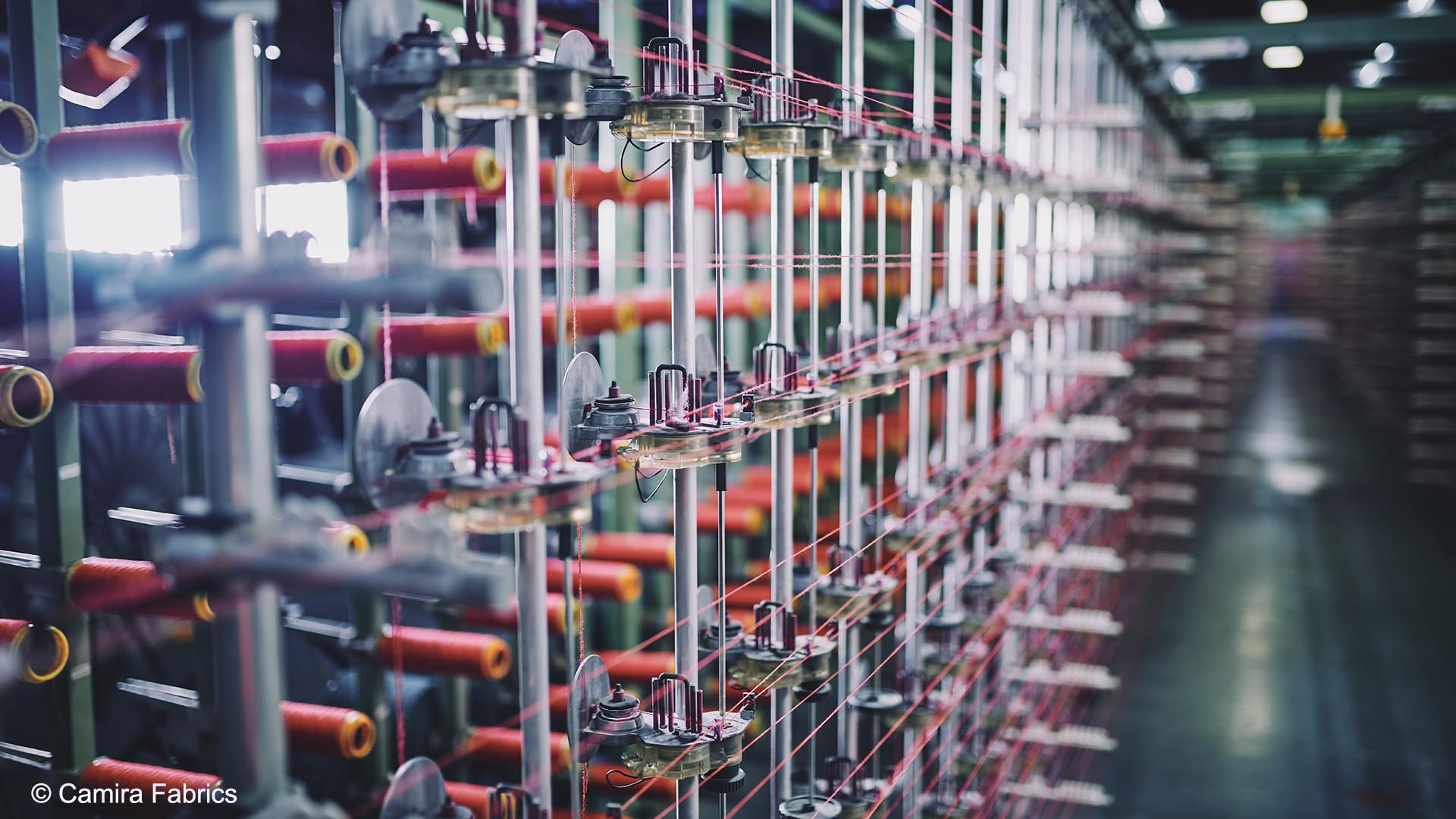The University of Huddersfield has collaborated with local textiles firm Camira to investigate natural solutions to the challenge of producing fire resistant fabrics with a more sustainable manufacturing process.
Finishing is the process that gives fabrics many of their most important characteristics. Camira Fabrics supplies high-end interior fabrics for everything from homeware to public transport, meaning flame-retardant finishes are a top priority.
Collaborating with Future Fashion Factory, the company is moving toward a new finish that meets the same performance standards with a much smaller environmental impact: reducing water, energy and chemical usage for more efficient and sustainable manufacturing.
Harnessing a natural and sustainable solution
To investigate natural flame-retardant finishes, Camira collaborated with Professor Parik Goswami at the University of Huddersfield. For Parik, the opportunity aligned perfectly with Huddersfield's commitment to the Textiles 2030 initiative, which aims to accelerate the shift towards sustainability and circularity in the UK.
"We're focused on using chemistry from the natural environment to support the region's businesses to become more sustainable," says Parik. "It's exciting to harness natural resources to give Yorkshire companies the cutting edge when facing tomorrow's challenges."
Parik and his team in the Technical Textiles Research Centre undertook lab testing of new natural chemical alternatives, supported by Colin and Mick's commercial insight to develop solutions that would meet industry standards.
The result was a promising set of findings which shed light on the potential performance of a natural flame-retardant finish. Even more exciting, the new solution could be added to the fabric in the dye bath as part of a one-step dyeing and finishing process.
 Manufacturing fabric is energy and resource-intensive
Manufacturing fabric is energy and resource-intensive Camira produces fabrics at scale to meet large orders from around the world. Flame retardance is one of the most popular properties for these customers and needs to be imparted through a finishing process after the fabric has been dyed and woven. Every stage of the manufacturing process adds time, energy, water or chemicals - as well as room for costly mistakes.
"Existing treatments can change the shade of the fabric, so the results may not be repeatable from batch to batch," says Mick Coll, Senior Innovator at Camira. "There is a high margin for error, so the process needs to be supervised by experienced staff. If something goes wrong a lot of resources are wasted."
As well as the time, risk and complexity associated with current methods, changing regulatory standards pose an entirely new challenge which limits business opportunities.
Futureproofing as well as fireproofing
Camira's wool / bast fibre fabrics have a natural inherent flame retardancy offering a sustainable solution for some sectors, but for other wool fabrics, which require chemical flame retardant treatments, the industry is in need of a more sustainable solution.
"Some fire-retardant finishes are being outlawed in markets which then become closed to us," explains Colin, Technical Development Manager. "As national and international standards change, we want to futureproof the company with a natural alternative to traditional methods."
Removing an entire stage of the manufacturing process would massively reduce the energy, water and chemical resources needed to produce Camira's fabrics - and by simplifying the process and reducing the margin of error, it would enable more consistent results to satisfy customers' quality specifications.
Camira is currently investigating commercial sources of natural chemicals which will enable them to scale up and commercialise the new technique. The novel approach could be applicable in markets that are still closed to the company, creating new opportunities worldwide. Bringing an innovative solution to market could even give Camira a new revenue stream.
"The market is saying that we need to become sustainable, but nobody actually has a solution to address this challenge," Colin explains. "If we're the first, the market potential is huge."






